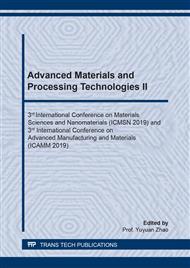p.14
p.20
p.26
p.34
p.39
p.51
p.59
p.67
p.75
A Design Method for Sound Absorbing Structure at Low Frequency
Abstract:
Traditional acoustic absorbing materials are not effective for low-frequency engineering applications, but on the basis of the locally resonant principle, acoustic metamaterials can utilize the resonance of vibrators to dissipate acoustic energy and realize the subwavelength design of acoustic absorbers, therefore the acoustic metamaterials have great potential applications for noise reduction at low frequencies. This paper firstly employs the Bloch theory to investigate the effects of the parameters of the unit cell of the embedded membrane-and-mass metamaterials on the dispersion characteristics of the metamaterials, and the band gap is verified by the full wave finite element analysis. And then, a model of acoustic metamaterials is constructed by embeding an array of membrane-and-masses into a channel structure filled with acoustic materials. Next the transient frequency response analysis is performed to simulate the wave propagation in the model, the results show that the acoustic metamaterials can absorb the sound through the local resonance of the membrane-and-mass vibrators. Finally, an acoustic metamaterial maze structure is designed and analyzed, in the structure the membrane-and-mass array is embedded and the masses varies periodically. The research illustrates that the acoustic metamaterials with membrane-and-mass unit cells have excellent performances on the sound absorption at low frequency.
Info:
Periodical:
Pages:
39-50
Citation:
Online since:
March 2020
Authors:
Price:
Сopyright:
© 2020 Trans Tech Publications Ltd. All Rights Reserved
Share:
Citation:


